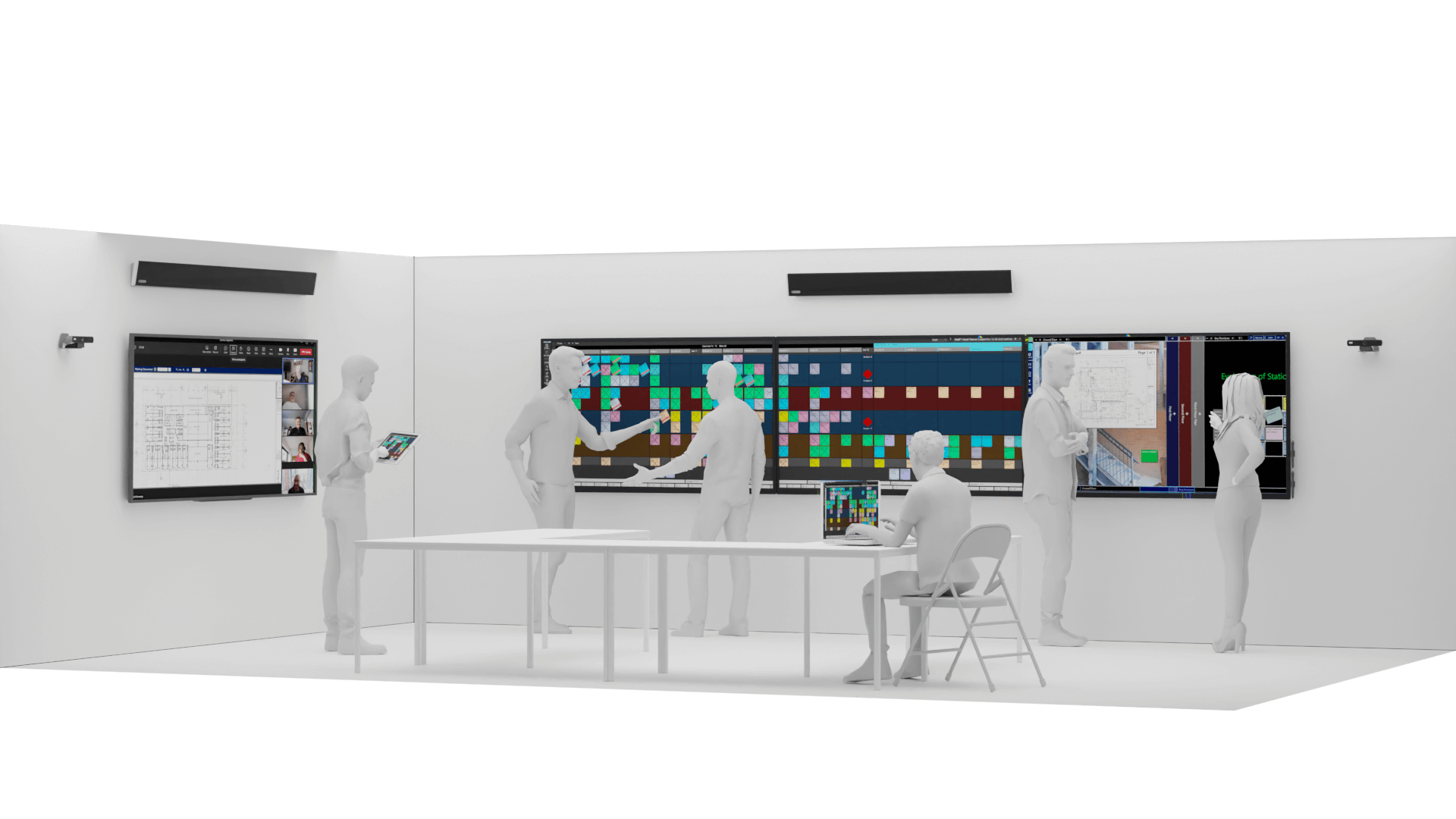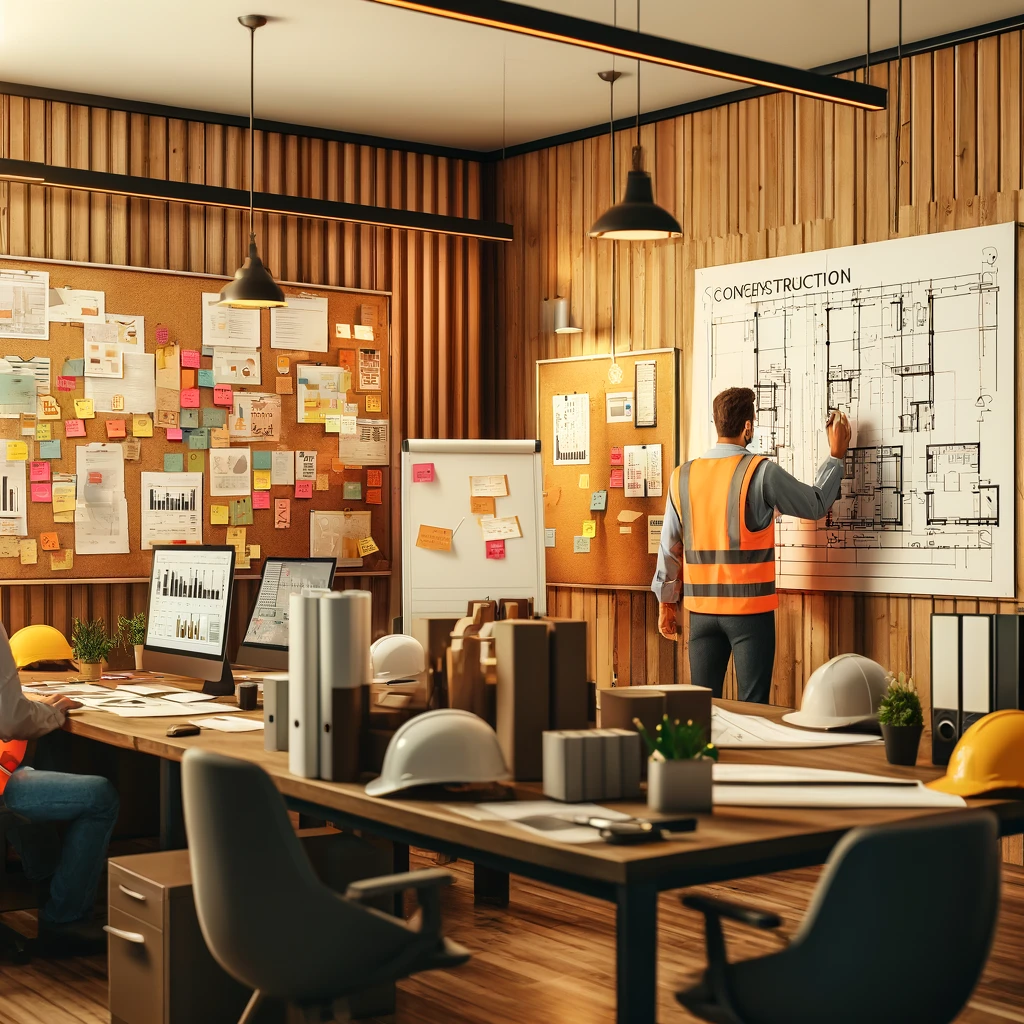
The Evolution of Construction Collaboration: Big Room and Smart Technology
The construction industry, once known for its conservative practices, is now rapidly embracing digital transformation. Digital Construction, utilising smart technology for collaborative purposes, is revolutionising how large-scale projects are approached, managed, and completed.
At the heart of this transformation lies the concept of the Big Room. Inspired by the Japanese principle of ‘Obeya,’ meaning ‘large room,’ the Big Room serves as a collaborative space where multidisciplinary project teams converge to navigate projects from inception to fruition. This approach emphasises transparency, interactive visual collaboration, and continuous improvement.
Key Principles for Effective Big Room Experience
The Big Room operates on structured principles aimed at fostering transparency, collaboration, and efficiency. It prioritises respect for individuals, aligning goals, and developing clear criteria for project success. Open dialogue and proactive problem-solving replace siloed work, fostering a blame-free environment focused on improvement.

Bringing Big Room Planning to Construction
The concept of Big Room Planning finds its roots in industries like automotive manufacturing, exemplified by Toyota’s development of the Prius. Adapted by the Lean Construction Institute, it aims to streamline complex construction projects, enhancing efficiency and effectiveness.
Seven Benefits of Big Room Planning and the Last Planner System
Big Room Planning, combined with the Last Planner System (LPS), offers numerous advantages:
- Commitment: Shared objectives strengthen team cohesion.
- Communication: Improved sharing of plans and updates facilitates decision-making and transparency.
- Collaboration: Enhanced teamwork reduces waste and improves workflow.
- Problem-Solving: Proactive problem-solving fosters continual improvement.
- Quality Interactions: Clear roles and effective communication expedite issue resolution.
- Decision-Making: Efficient interactions lead to faster and better decisions.
- Performance Tracking: Visual progress tracking ensures project alignment.
The Challenge of Hybrid Work Environments
While traditional Big Rooms thrived on physical presence, the rise of hybrid work models necessitates digital adaptation. Innovative conferencing and collaboration technologies now support virtual and physical collaboration, enabling a seamless transition to the Digital Big Room.
Introducing the Digital Big Room
Digital tools replace analog methods, offering flexibility in location and accessibility. Solutions like Nialli Planning Software streamline collaboration and data capture, enhancing efficiency and accessibility.
Nialli Planning Software: Enhancing Collaboration and Efficiency
Nialli’s suite of digital planning tools optimises the Last Planner System, promoting collaboration, productivity, and efficiency throughout the construction lifecycle. Accessible from various devices, it simplifies planning, coordination, and decision-making.

Creating the Best Digital Big Room Experience
Ascentae and Nialli offer an integrated solution for Digital Big Room Planning, combining planning software with audiovisual technology. This plug-and-play solution maximises communication, collaboration, and productivity.
Conclusion
The evolution of construction collaboration, epitomised by the Big Room and smart technology, marks a significant shift towards digitalisation in the industry. Embracing these innovations promises greater efficiency, transparency, and success in tackling complex construction projects.